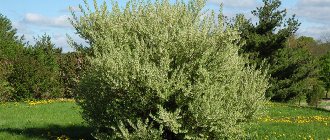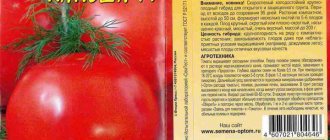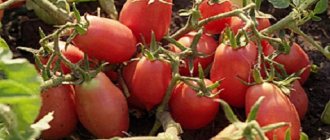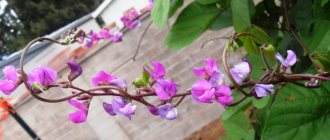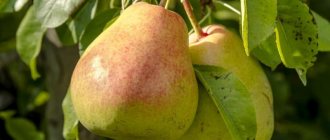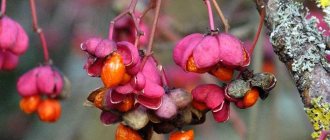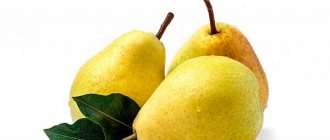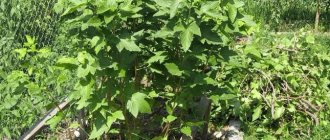Description of the tomato variety Treasure of the Incas
Treasure of the Incas is classified as a mid-early tomato variety. Seed material of a large-sized hybrid is sold on the commodity market and. After the planting material has been planted in the beds, you can begin harvesting the first harvest after 90 days.
Indeterminate bushes can grow up to 1.8 m in height, as a result of which it is necessary to first take care of gartering and pinching. Many experts recommend forming tomatoes into 1 stem.
Ripe fruits have a round shape, which more closely resembles a heart in appearance. The weight of the fruit can vary from 250 g to 700 g maximum. A small number of seed chambers, sweet in taste.
Attention! In central Russia, it is recommended to grow the crop in a greenhouse.
Characteristics of the variety
The variety is mid-early, sometimes called decorative for the appearance of the fruit. Thanks to its ease of care, it can be bred by beginners. The only difficulty is growing strong and viable seedlings.
Description of fruits and bush
The bush is indeterminate, grows up to 200 cm and requires staking to a support. The leaves are ordinary, dark green.
Tomatoes of the Treasure of the Incas variety are very large (weighing from 250 to 700 g), with dense skin. In the technical maturity phase they are yellow-green in color, in the biological phase they are yellow-orange. The shape is round with a slightly elongated tip. There is no ribbing. The pulp is juicy, fleshy, divided into large chambers.
Productivity
According to the description of the variety, up to 5 kg of tomatoes can be harvested from one bush when grown in a greenhouse and up to 4 kg in open ground.
Productivity depends on the length of daylight hours and temperature changes: in the southern regions the bush will produce more fruit than in the Urals.
():
The most important condition for growing tomatoes in a particular region is the length of the growing season. The longer this period, the longer the tomato will bear fruit and the higher its yield.
Area of application of fruits
The Treasure of the Incas tomato variety is used for food and to decorate the garden: its bright, unusual skin adds variety to the appearance of the plantings.
Vegetable growers advise not to can the fruits, but to eat them raw. Due to its fleshy pulp, the tomato produces little juice, and its sweet taste is not suitable for making soups. Tomatoes can be frozen or made into savory sauces.
Since they are very beautiful when cut due to their color and chambers, they are sometimes used to decorate dishes.
Resistance to diseases and pests
According to the characteristics, the tomato is resistant to a number of diseases, including:
- verticillium;
- tomato mosaic;
- Alternaria blight;
- fusarium;
- late blight
The tomato is immune to most tomato viruses. With excessive watering, late blight occurs.
():
The main prerequisites for the occurrence of late blight are high air humidity and the presence of droplet-liquid moisture on the leaves. Such conditions occur when there are sudden changes in air temperature between day and night, which leads to dew or fog.
If you follow the rules of agricultural technology, the variety will not be attractive to pests.
Growing regions
When grown in a greenhouse you can get excellent results
In open ground, the tomato variety Treasure of the Incas is grown in the Krasnodar region and beyond the Urals, but in the latter case the yield will be lower.
When planting tomatoes in a greenhouse, the region where they are grown does not matter. The bush shows the highest yield when grown in greenhouses in central Russia.
Taste qualities of fruits
Some gardeners consider Treasure of the Incas tomatoes to be one of the best options available for sale on the Russian market. Ripe fruits are quite large in size, as a result of which the weight of one tomato can vary from 500 g to 800 g. It is worth noting the taste. Due to the fact that tomatoes contain a large amount of sucrose, they are very sweet and sugary. Despite the fact that the variety is universal, many do not recommend using it for canning, which is facilitated by its large size.
Characteristics of hybrid tomato
Hybrid beef tomato belongs to the tall plants of a universal type of cultivation. However, if you are in a region with risky farming, you should give preference to cultivating tomatoes in a greenhouse. In addition, it is more difficult for an indeterminate plant in the exhaust zone to provide reliable support and shelter in case of bad weather.
The tomato is early ripening - already after 90-95 days from full germination you can enjoy the new harvest. The first cluster is tied quite high - above the 7th leaf, and forms 4-6 fruits. The internodes are short, and subsequent infructescences are located every 3 leaves.
Tomatoes, like most large-fruited ones, take a long time to pour. The unripe ones are light green in color, while the ripe ones appear in all their glory - deep orange, with yellow-red stripes. The shape is closer to heart-shaped than to round, because many tomatoes “pull their nose.” The ribbing is moderate, there is no green spot at the base. The wait for the tomato to reach the desired condition is more than compensated by high yield (up to 18 kg per 1 sq.m.) and long-term fruiting.
When cut, the tomato is very beautiful, fleshy, with dense pulp. Despite the multi-chambered appearance, the seeds are practically invisible. The taste is dominated by sugar content, the sourness is almost not felt. The average weight of tomatoes is 260-400 g, some specimens reach 700-750 g.
Attention! The tomato skin is thin but dense. The originator of the hybrid claims resistance to cracking, but with high humidity and overexposure on the bush, cracks in the fruits are common.
According to ripening time | By type of growth | By type of use | By growing method | Fruit weight (g) | Productivity (kg/m2) | Fetal characteristics |
| Early ripe, 90-95 days | Indeterminate, 180-200 cm | Universal | For greenhouses and open ground | 260-400 | Greenhouse: 16-18 kg, exhaust gas: 14 kg | Yellow-orange. Round heart shape |
Pros and cons of the Treasure of the Incas variety
If we consider the main advantages of Treasures of the Incas tomatoes, you should pay attention to the following points:
- early fruit ripening;
- abundant flowering;
- large buds;
- sweet taste;
- the peel is quite dense, as a result of which the fruits do not crack during ripening;
- the harvested crop can be transported over long distances, while its presentation will be preserved;
- high level of resistance to temperature conditions and many types of diseases.
In addition, it is important to take into account the significant disadvantages of this variety:
- Despite the fact that the fruits are universal, they are not recommended for canning. This is primarily due to the fact that tomatoes contain a large amount of sucrose. Fresh tomatoes are great for meat and fish dishes.
- In a greenhouse, bushes can reach a height of up to 2 m. Not every gardener, even an experienced one, has the opportunity to grow such “trees” in limited space.
Tomatoes of the Treasures of the Incas variety are rich in vitamins and minerals.
Attention! The calorie level per 100 g is 20 kcal.
Advantages and disadvantages
Among the positive qualities of the variety are the following:
- Early ripening period, thanks to which all tomatoes have time to fully ripen during the season.
- High yield.
- Heat and drought resistance.
- High immunity to nightshade diseases.
- Excellent taste.
- Good keeping quality.
- Resistance to transportation.
- The fruits do not crack.
Among the disadvantages of this variety is the need for pinching and tying the stems to a support.
Agricultural technology of tomatoes Treasure of the Incas
If you take into account the agricultural technology of growing a crop, then it is worth taking into account the fact that you need to sow the seeds 60 days before the expected time of planting the seedlings in the beds. Seedlings are picked after 2 or more leaves have appeared on the tomato bushes.
When planting tomato bushes in a permanent place of growth, it is necessary to use a planting scheme. Thus, for every sq. m it is recommended to plant up to 3 bushes, a maximum of 4 bushes if the formation was carried out in 1 stem.
Further care of the crop involves timely watering, removing weeds, applying fertilizers, loosening the soil, pinching and preventive measures, thanks to which the appearance of many types of diseases and pests can be prevented.
Advice! Before you start sowing seeds, it is recommended to first study photos, reviews and descriptions of the Treasure of the Incas tomato variety.
Landing rules
After the seedlings have grown to the desired size, they should be transferred to open ground or a greenhouse. It is recommended to adhere to the following scheme:
- in open ground it is allowed to plant up to 3 bushes per 1 square meter. m;
- in the greenhouse - 4 tomato bushes per 1 sq. m.
After the planting material has been planted, it is recommended to water the crop under the stem. In order for the plants to adapt faster and better, it is recommended to cover the plantings with polyethylene for several days.
Important! If the root system is damaged, the bush usually dies.
Watering and fertilizing
It is recommended to water the plants early in the morning. This is due to the fact that direct sunlight can burn leaves if moisture gets on them. Before the flowering period, watering is carried out once every 7 days, using 5 liters of water per square meter. m, during flowering the amount of water is increased to 15 liters.
It is recommended to apply light mineral fertilizers as top dressing. If the crop is planned to be grown in open ground, then it is necessary to mulch the soil.
Pinching and tying
Stepping should be carried out according to the general rules - it is necessary to remove all existing excess shoots from the bush, as a result of which a stem should remain, the length of which does not exceed 5 cm. The stump that remains after the procedure prevents the appearance of new ones. Since the bushes can grow up to 2 m in height, it is necessary to take care of the support to which the tomatoes are subsequently tied.
Formation
Many experts recommend paying due attention to the formation of bushes. Picking should be done at the moment when about 1-2 leaves appear on the tomato bushes. During the procedure, you will need to pinch the main root, which will prevent the bushes from stretching in height. When growing seedlings, it is worth applying mineral fertilizers.
Protection from diseases and pests
A distinctive feature of Treasure of the Incas tomatoes is their high level of resistance to fungal diseases, sudden temperature changes and adverse weather conditions. If a disease is detected, it is necessary to use special chemicals or folk remedies.
Transfer
Before transplanting seedlings, you need to prepare the ground:
- disinfect it. You can use a solution of potassium permanganate or special products from the store. Disinfection is carried out at least 2 weeks before transplantation;
- apply organic fertilizers a week before the procedure;
- water the soil 2 days before.
Transplantation is carried out in warm weather
Transplantation is carried out in warm, dry weather to keep the roots healthy and allow the plant to get stronger. The planting pattern is 60x70, the depth of the holes is up to 25 cm. Sometimes vegetable growers plant bushes closer to each other, but you should not place more than 4 plants per 1 m².
Seedlings can only be transplanted into well-warmed soil.
After transplanting the seedlings, they are watered (at the root) and left to take root in the new place for a week. Then it is recommended to feed the bush and install a support to which it will be tied in the future.
When planting in open ground, vegetable growers advise forming a crop of 3 stems to limit the growth of an indeterminate bush. When growing Treasures of the Incas in greenhouses - 1-2 stems.
Productivity
Tomatoes Treasures of the Incas are considered the champion among early ripening varieties. The ripening process begins in the second half of May or the first half of June. As a rule, with the onset of the first frost, the fruiting period stops. If you provide high-quality care for the crop, then it is possible to collect from each square. m:
- up to 14 kg in open ground;
- up to 20 kg from a greenhouse, greenhouse.
As practice shows, these indicators are considered the highest.
Attention! If necessary, you can increase the yield; this will require applying fertilizers and fertilizing.
Features of cultivation
Treasure of the Incas tomatoes are undemanding in care. The rules for sowing seeds, transplanting into soil, and applying fertilizers during the growing season are standard.
Growing seedlings
Seeds are planted 55 - 65 days before the planned transplantation of seedlings into the ground. Sowing is carried out immediately in separate containers or in a common container, maintaining a distance between seeds of 3 cm, between rows of 5 cm - 7 cm. The seeds are pre-soaked.
Before emergence, seedlings are kept at +25°C. When the seedlings emerge from the soil, they are transferred to a cooler place with a temperature range of +21 – +23°C during the day and +16 – +18°C at night, and are provided with good illumination with phytolamps.
Picking of seedlings is carried out with the appearance of the second true leaf. During the procedure, pinch the main root so that the seedlings do not stretch. During the period of seedling maintenance, 2–3 fertilizing with complex fertilizers with microelements will be needed.
Transplanting seedlings and further care
Recommended planting density is 4 plants/m2 . Planting is carried out using the traditional method in holes up to 25 cm deep. Before planting, mineral additives and organic fertilizers - humus and wood ash - are added to the holes. In the future, regular watering, loosening, fertilizing, prevention of pests and diseases, pinching and bush formation will be needed.
Bush formation
The manufacturer recommends forming Treasure of the Incas tomato bushes into one stem. The procedure is performed with simultaneous pinching and lightening of the bush to the first remaining cluster of fruit. The main stem is tied to stakes or a trellis is used to relieve the load on the plant.
Vegetable growers who grow Treasure of the Incas in open ground leave a reserve shoot in case of unfavorable weather conditions and premature stopping of the growth of the main stem. The substitute shoot is obtained from the stepson of the axil of the fourth and fifth leaves. This method is called double-stemming tomatoes. The planting density in this option is 3 plants/m2.

